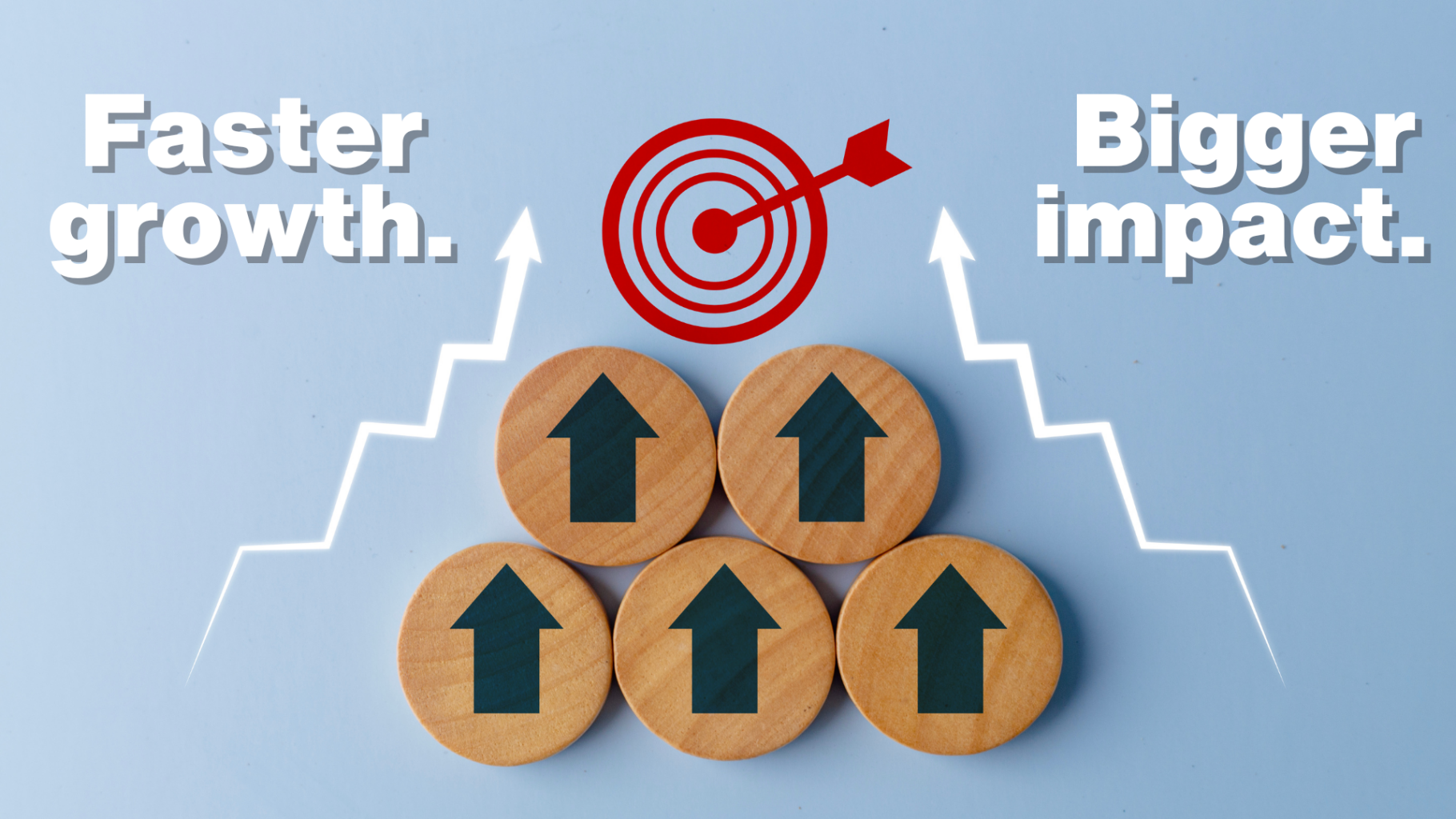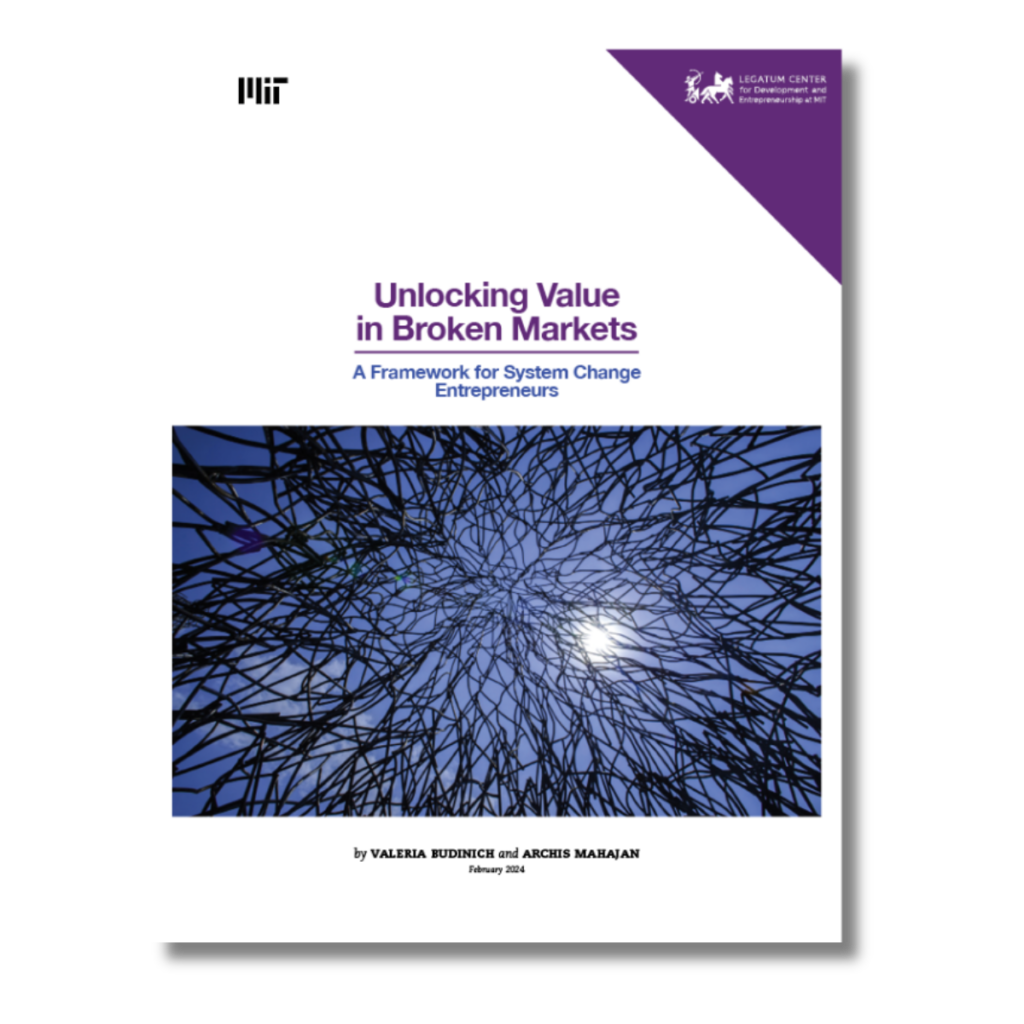Are You, As An Entrepreneur, Achieving All The Impact you can?
By Valeria Budinich, Scholar-in-Residence

There is an increasing number of business and social entrepreneurs worldwide committed to solving complex problems like sustainable and affordable access to water, sanitation, healthcare, housing and/or climate goals. And as they learn about the problem, they quickly realize that there are structural systemic barriers (e.g. policies and regulations, limited infrastructure, and people’s mindsets) that prevent them from doing more. Most of these entrepreneurs are able to improve access for some, but the majority of them are far from achieving the scale that is required to truly solve the problem.
At the Legatum Center for Development and Entrepreneurship at MIT Sloan, we recently surveyed African entrepreneurs leading early-stage startups. All these entrepreneurs are developing promising market-based solutions to problems like 600 million people in Sub-Saharan Africa lacking access to electricity or hundreds of millions of small farmers unable to reach better markets for their agricultural products. And yet, as illustrated through the quotes below, when we asked them for their aspirations, there was a huge gap between their articulation of the market need (i.e. “the problem”) and what their ventures would achieve in five years.

In fairness to these entrepreneurs, enabling 10 million of people in five years to have access to a green energy solution, that is profitable and hence scalable, is undoubtedly a remarkable achievement. But we and them know that this scale is a very small fraction (less than 2%) of the problem they are intending to solve. At this rate, it will take decades in spite of the fact that the technology is proven, the business model works, and the financing is available. What could we all do differently? The short answer: learn to practice the art and science of system change entrepreneurship.
Good entrepreneurs in growth markets across the world understand that the problem they are intending to solve ‘lives’ within a system, that success goes beyond their ability to develop and deliver a particular product or service. They know well the systemic barriers for the scaling of their specific solution. They also understand that the ‘root causes’ for economic and financial exclusion exist by design somewhere within ‘the system.’ But, more often than not, good entrepreneurs make the conscious choice to innovate within those constraints and, hence, they limit their potential impact. In contrast, exceptional entrepreneurs practice the art of system change, where the end-game is to build the capacity to reach full-market truly solving the problem they are intending to solve.
Some examples of exceptional entrepreneurs who applied system thinking to identify a set of highly leveraged interventions to complex social and economic problems include,
- Florence Nightingale the founder of modern nursing;
- Mohammed Yunus the architect of the global microcredit revolution;
- G. Venkataswamy the founder of Aravind who enabled affordable cataract eye surgery for millions of people in India and beyond, and more recently;
- Nicole Rycroft the founder of Canopy which is helping large companies to transform multibillion dollar supply chains and protect vital forest ecosystems all over the planet.
Names of system changers that are more familiar in today’s business world include Elon Musk because of his role in accelerating the adoption of electric vehicles and Pierre Omidyar who founded e-bay and pioneered platforms with the capacity to enable markets access for everyone. All these systems entrepreneurs are practicing system change entrepreneurship because they are leveraging the power of markets to transform entire industries. They built new systems that advance prosperity for all.
Four levels of impact but only two are system change
One of the first steps to become a systems entrepreneur is about understanding that not all impact of market-based solutions is created equal. Every successful commercial solution offers the opportunity to create jobs and wealth while overtime unlocking value for increasing number of consumers. In another words: ‘the more you sell, the more impact you achieve.’ But as shown below, this initial ‘commercial feedback loop’ can have a compounded impact if combined with system change interventions.[1]
Over a decade ago, Ashoka – the leading global community of systems changers – introduced the concept of 4 levels of impact to explain important differences among social entrepreneurs who are contributing to change the world.[2] Below, we show these 4 levels in the context of market-driven solutions in order to help you see opportunities to leverage markets for impact.
- Increase Direct Access: Ventures using business models based on improving access by delivering a specific product or service to customers.
- Increase access by multiplying new applications: Spread already proven solutions through franchising or platform-based models.
- Innovate to remove critical systemic barriers: Introduce interventions that address the ‘root causes’ that prevent you from reaching larger numbers of consumers (ex. build a partnership to improve access to consumer financing for your product.)
- Innovate to change the ‘framework’: Help everyone ‘see’ the problem, and their role in it, differently (ex. a recycling initiative introducing incentives for consumers and distributors to contribute to a more sustainable value chain.)
These 4 levels of impact are all important and needed, but we will only SOLVE at scale if we learn do more of 3 and 4. The reason is simple yet profound: when you introduce system change interventions, succeeding would often translate into faster and larger impact because you are creating new positive feedback loops across an entire system.
Connect with players in your local, regional and global Innovation & Entrepreneurship Ecosystem (I&EE) who understand and practice system change
MIT’s Stakeholder Framework for building and accelerating Innovation and Entrepreneurship Ecosystems can help you understand the way different stakeholders play a role in supporting the emergence of innovation-driven start-ups around the world.[3] As the complexity of problem increase, the number of these start-ups pursuing system change solutions is also increasing. The stakeholders supporting these start-ups like policy makers, large corporations, investors, and universities could be invaluable allies in the process of identifying partners for your venture.
And, when it comes to leveraging markets for good through system change approaches, philanthropic actors can be especially useful in growth markets. The reason is two fold, they play a unique role providing R&D funding and in building the collaborative infrastructure needed by initiatives transforming markets for the good of all. Some of the philanthropic actors supporting innovation and entrepreneurship worldwide are the Rockefeller Foundation, the Omidyar Network, Ashoka; Skoll; and, the Gates Foundation.
But what is system change entrepreneurship, after all?
When you start applying system thinking to the development of your solution, you enter the space of system change entrepreneurship. And, if you are practicing system change entrepreneurship when you respond positively to at least one of these questions:
- Are you an architect who envisions a new system, one where the problem no longer exists?
- Are you a builder who enables new feedback loops with the power to shift market dynamics on your favor and those you are intending to serve?
- Are you making ‘your business’ to ensure that this new market dynamics becomes the ‘new normal’?
- Are you unlocking value and building partnerships in ways that advance not only the interests of your company but also the ‘common good’?
If you are ready to sharpen your capacity to be a systems changer, we invite you to download and read our new white paper “Unlocking Broken Markets: A Framework for System Change Entrepreneurs.”

[1] Learn about the different types of systems changers in “Unlocking Broken Markets: A Framework for System Change Entrepreneurs,” by Valeria Budinich, and Archis Mahajan (November, 2023). ADD link to Legatum website
[2] https://www.ashoka.org/en-us/story/4-levels-impact
[3] See “MIT’s Stakeholder Framework for Building & Accelerating Innovation Ecosystems’ by Dr. Phil Budden and Professor Fiona Murray (April, 2019), https://innovation.mit.edu/assets/MIT-Stakeholder-Framework_Innovation-Ecosystems.pdf



